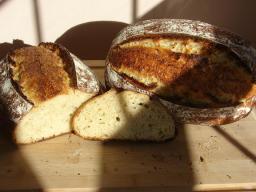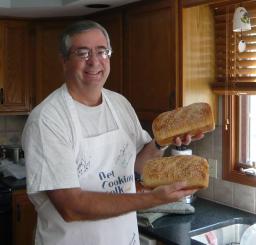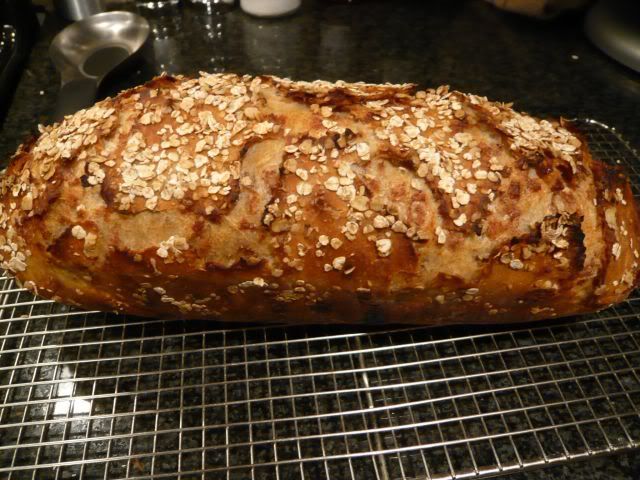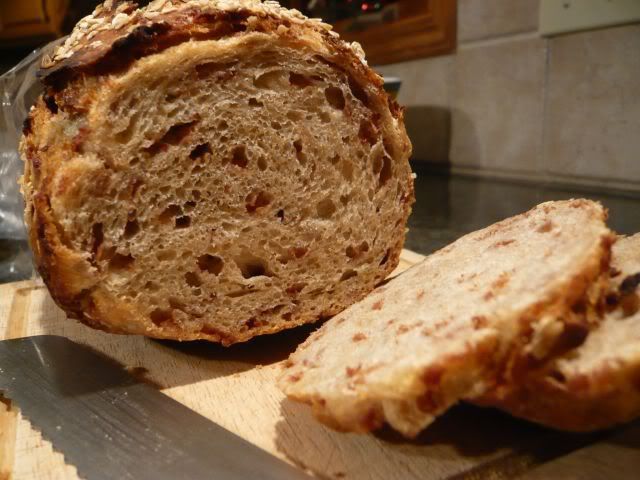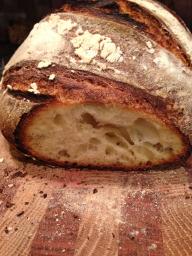So , I finally have one I want to share in my first post! I have only been baking steadily for a couple of months now, and since I successfully captured some wild yeasties, have been using them exclusively. I have also tried to simplify things as much as possible, hence have tended to keep my sourdough starter roughly the same hydration as my final dough. As I have a regular day job, but don't want to limit my baking to weekends, I have been working on a means of fitting my baking into a regular day's schedule, and have come up with a technique that seems to work for me (made specific for this loaf):
The night before baking, I take the ~1 cup of starter that I have in my fridge out, and add 1 cup flour, 1/2 cup water and ~1/3 tsp salt. I typically use rye or whole wheat, but this time I used organic spelt (the existing starter was ~80% spelt, 20% AP). Mixed alltogether and left on the counter overnight.
Morning, 5:45am before going to work, added 3 cups organic AP flour, 1 1/2 cups water, 1 and a bit tsp salt. Mixed together, and put down in the basement where it is a bit cooler.
Went to work. Returned ~5:00pm.
Had roughly doubled. The challenge has been to find a spot in the house that is the right temperature to leave the dough all day. This has been a cool spring, so some days the basement is too cold, and I get almost no rise. Recently it has been a lot hotter, and I can get over-fermentation. This still to be refined. Nevertheless, today things worked out perfectly!
Cut ~1/2 cup of dough off to save as my next starter, stretched/folded/rested/formed a boule and let it sit in the colander for a couple hours to proof. Next used the handy cast-iron dutch oven method, and results were most satisfactory. The starter got fed (tripled) and immediately put in the fridge.
I have varied quantities of starter from batch to batch, and this quantity (~1 cup doubled the night before and then more than doubled the next morning) has given me the best flavour yet! Not so sour that the wife won't eat it, but not as lightly-flavoured as I have been getting with half the quantity of starter. Mmmmm.

Bit of an explosion on the crust, despite a cramped (as it was in the dutch oven) slashing with my handy straight razor.
